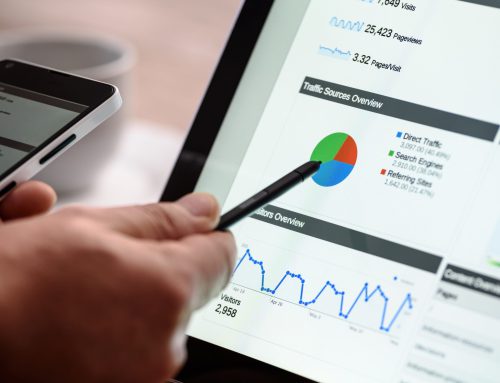Coronavirus changed the way we live our daily lives and how businesses operate. It may have taken business leaders some time, but COVID closures forced a “new business normal” to emerge with an innovative strategy to keep businesses growing while workers were remote. Now, companies world-wide are moving on from the stopgap information technology measures deployed during the pandemic and eyeing more ambitious projects. This comes as companies are projected to break records on IT spending in the coming year.
It is likely that this post-pandemic growth will be due to the increasing IT demands by the hybrid workplace. This includes a renewed focus on data and the processes required for cost transparency and ensuring there is proper visibility between business and IT dollars.
To better analyze this, it is important to examine the “What remains the same” versus “What is different” trends through a unique lens — Procurement. By looking at the before and after, we can get a better understanding of the future of procurement.
Trend 1 — Focus on quick wins.
The first consultant to coin the phrase “low hanging fruit” has long been forgotten. However, the message endures. Corporate procurement managers are amongst the best at executing on this strategy because their job is to ask the right questions. These questions include “where are we paying too much?” “Why do we pay for things we no longer use?” “What actions can we take that ensure business continuity and recognize future savings?”
These questions allow procurement managers to drive substantial savings for their organizations through actions that align to employees, business units, locations, and services.
This trend will remain the same. As long as the bottom line is a deciding factor then procurement managers will continue to ask questions and find ways to save money.
Trend 2 — My corporate “IT-As-A-Service” life.
It is not simply the inexorable drive to the cloud ($1.3T by 2022, Forrester) that is pushing the increase in monthly service subscriptions. Businesses are “foaming at the mouth” to push projects faster with less upfront resources required for infrastructure and development. This strategy eliminates much of the initial cash outlay through a “forever lease, never own” purchasing model.
For businesses, the “perpetual auto-renew” is also a favorite of vendors who receive sky-rocketing market valuations and private-equity accolades through these new, higher margin and more predictable, recurring payment plans.
This trend is desperately needing a new approach. To save money, the monthly subscriptions must be streamlined and proactively controlled. In a post-pandemic business world, waste like this needs to be addressed.
Trend 3 — Effective business and IT collaboration will drive success.
Despite the many challenges that COVID presented, it did improve communication across business and IT. Companies and teams, previously in information and data silos, have learned to collaborate and focus on defeating the “common COVID enemy.” The growth in adopting many tools such as Slack, Zoom, and MS Teams has provided the tactical ability to execute with a geographically distributed workforce.
This trend will not change as we come out of the COVID era. The hybrid workplace has shown value to many companies. Having a virtual workforce with effective tools to communicate is a requirement now.
Trend 4 — The hybrid office will be a way of life.
The new normal will include working from home and working from the office. Decentralized work has driven infrastructure changes that are here to stay. Business now is BYOD (bring your own device), storage, broadband availability, application anywhere, and security postures.
Managing the connectivity and the applications is a technical problem easily within the skill set of most organizations. However, the improvements in the communications processes and data/information access is a new struggle for companies. In addition, leveraging and aligning these new costs to traditional spending and bridging the gap between business and IT expenditures adds another layer to this evolving business climate.
The hybrid workforce will require a new approach. Distributed ownership, regional suppliers and non-conterminous service terms will exacerbate a growing problem with cost and vendor management. Complicating these new buying trends will also be dramatic organizational changes driven by post-pandemic priority shifts and workforce transitions.
Trend 5 — IT cost transparency is a virtue.
Paying for only what you need, only when you need it is an elusive goal surrounding corporate IT investments. Various and complex vendor billing models add to the “blurring” of lines between need, volume, and commitment length. To gain transparency, it will be essential that businesses look to technology to level the playing field and provide clarity surrounding these IT economic challenges.
This trend will remain the same. Cost transparency will continue to be a core value in business.
Trend 6 — New solutions are needed which deliver new value.
In the post pandemic world, the effective management of monthly subscriptions is paramount. Unfortunately, most current IT procurement and IT financial management solutions were not designed to support these recurring vendor commitments. Instead, their mission was to track static assets, invoices, and contracts.
For this trend, a new approach is required. The path forward will include identifying, gathering and normalizing all vendor service commitments. This will allow companies to track and proactively alert on low utilized purchases and opportunities to save on unnecessary subscriptions. By finding savings, improving efficiencies, and minimizing the “people-power” required to complete these tasks, businesses will see dramatic cost reductions.
More trends will surface as business leaders realize how COVID affected their daily operations. What started as “just plug the holes’’ decisions (and purchases), necessary to stay afloat in 2020, now need to be aligned to a strategic IT direction.
Ultimately, these challenges with inefficiencies will be met with innovation and the unknown with predictability. In 2021 and beyond, IT and procurement success should no longer be reviewed as a binary working/not working gauge. Procurement success should be defined as an organization’s ability to efficiently identify, align and timely act on all commitments and capabilities consumed.


